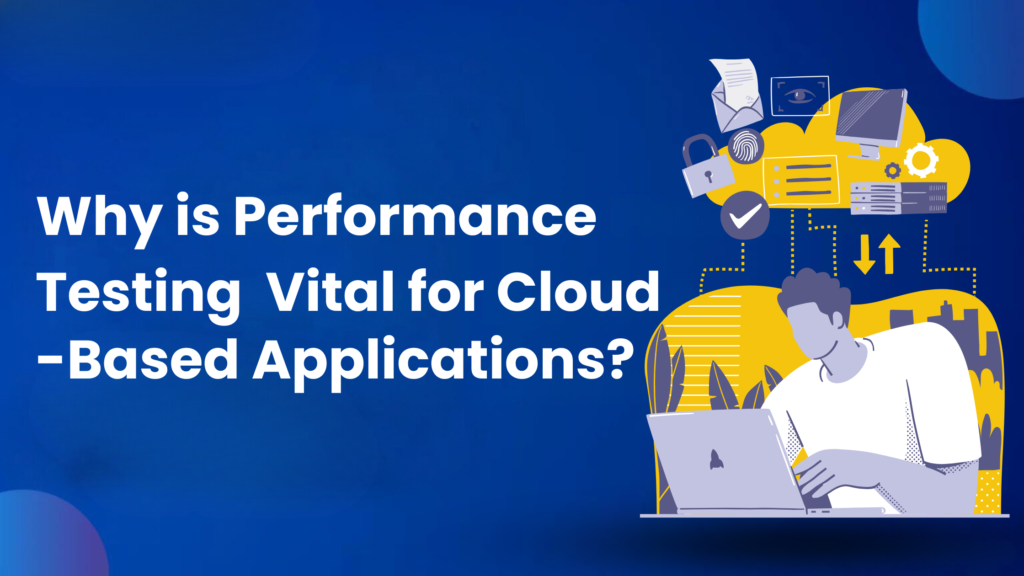

Why is Performance Testing Vital for Cloud-Based Applications?
In today’s era of cloud computing, businesses are increasingly shifting their applications to cloud-based environments to take advantage of scalability, cost efficiency, and flexibility. However, this transition comes with unique challenges, especially in maintaining performance. Performance testing plays a critical role in ensuring cloud-based applications deliver optimal speed, reliability, and scalability under varying workloads. This blog explores why performance testing is indispensable for cloud-based applications and how it ensures a seamless user experience.
Introduction
Cloud-based applications have revolutionized how businesses operate by enabling remote accessibility, cost-effective operations, and flexible scalability. Despite these advantages, the performance of cloud-based applications directly impacts user satisfaction, business continuity, and profitability. A poorly performing application can lead to downtimes, frustrated users, and significant revenue loss. This is where performance testing becomes essential.
What Makes Cloud-Based Applications Unique?
Cloud-based applications differ from traditional on-premises applications in the following ways:
- Scalability: Cloud applications can dynamically scale resources based on demand.
- Multi-Tenancy: Multiple users share the same infrastructure.
- Resource Dependency: They rely heavily on third-party services, APIs, and infrastructure.
- Global Access: Users access these applications from different geographical locations.
These characteristics make cloud applications highly efficient but also vulnerable to performance issues like latency, downtime, or resource bottlenecks.
Key Challenges in Cloud-Based Applications
1. Variable Workloads:
Cloud environments experience fluctuating workloads due to changing user demands. Ensuring consistent performance under varying traffic is a major challenge.
2. Latency Issues:
Global access can result in latency due to network delays or geographic distance between users and servers.
3. Resource Allocation:
Dynamic scaling introduces complexity in managing resources effectively during peak loads.
4. Third-Party Dependencies:
Cloud applications often integrate with third-party services, and their performance directly impacts the application.
5. Downtime and Outages:
Unexpected failures in cloud infrastructure can affect availability and disrupt services.
The Role of Performance Testing
Performance testing identifies bottlenecks and ensures the cloud application meets performance benchmarks under various scenarios. Here’s how performance testing plays a vital role:
1. Assessing Scalability:
Performance testing validates whether the application can scale seamlessly with increased traffic.
2. Ensuring Reliability:
It ensures the application remains stable under prolonged workloads or sudden spikes in traffic.
3. Optimizing Response Times:
Testing helps measure and improve response times to deliver a smooth user experience.
4. Validating Cost Efficiency:
By simulating workloads, performance testing ensures optimal resource utilization, avoiding unnecessary costs.
5. Identifying Weak Points:
It uncovers areas prone to failure under stress, enabling preemptive fixes.
Types of Performance Testing for Cloud Applications
- Load Testing:
Simulates expected user traffic to evaluate performance under typical conditions. - Stress Testing:
Determines how the application performs beyond its capacity limits. - Spike Testing:
Analyzes the application’s response to sudden and extreme traffic surges. - Scalability Testing:
Validates the system’s ability to scale up or down as needed. - Endurance Testing:
Tests the application’s stability over prolonged usage periods.
Benefits of Performance Testing in Cloud Environments
1. Enhanced User Experience:
Faster response times and seamless navigation lead to higher user satisfaction.
2. Reduced Downtime:
Proactive testing minimizes the risk of outages, ensuring uninterrupted services.
3. Optimized Costs:
By avoiding over-provisioning or under-provisioning of resources, businesses save on cloud expenses.
4. Improved Scalability:
Testing ensures the application can handle growing user demands without performance degradation.
5. Business Continuity:
Reliable performance boosts customer trust and helps businesses maintain a competitive edge.
Examples of Performance Testing in Action
Example 1: E-Commerce Platform
A retail company migrates its e-commerce website to the cloud. Performance testing simulates a Black Friday sale scenario with millions of users accessing the platform simultaneously. The tests reveal server capacity issues, prompting the company to scale up resources before the event.
Example 2: Video Streaming Service
A streaming service performs spike testing to evaluate how the system handles unexpected surges in viewership during a live sports event. The testing ensures that the platform remains responsive without buffering.
Conclusion
Performance testing is not just a technical necessity for cloud-based applications—it is a strategic investment in delivering reliable and scalable services. As businesses continue to migrate to the cloud, the need for robust performance testing becomes even more critical. It ensures a seamless user experience, protects brand reputation, and helps businesses thrive in a competitive market. Enroll in our comprehensive course on JMeter and learn how to master this powerful tool. By proactively addressing performance challenges, organizations can fully leverage the advantages of cloud computing while mitigating risks. Whether you’re developing a new cloud application or migrating an existing one, make performance testing an integral part of your development lifecycle.
Also read:
Consult Us


















